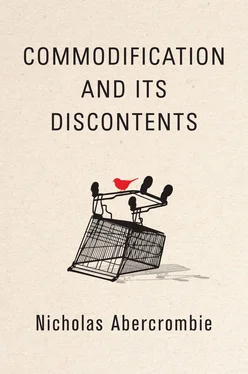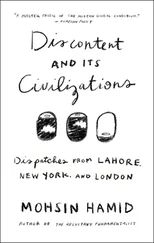A Labour government was elected at the end of the war in 1945. In many respects it inherited and enhanced the radicalism of its predecessor, putting into practice many coalition proposals, and extended it in its preference for wholesale planning. A set of New Towns was designated and construction quickly started. The preparation of local development plans was made compulsory and all development – with a few exceptions – required permission from the local authority. Most importantly, from the point of view of resistance to the commodification of land, there was an attempt to resolve the issue of compensation and betterment. The 1947 legislation provided for the imposition of a development charge on any increase in value that followed the grant of planning permission. This provision was indeed an important extension of state intervention in property rights in the public interest and has been widely described as the nationalization of development rights. Where the value of land was lowered by planning restrictions, compensation would be paid. It would not be paid, however, as a consequence of any refusal to develop.
With the exception of the compensation and betterment provisions, there was a remarkable degree of political agreement on a planning system which regulated what landowners could do with their land. This consensus lasted for thirty years from the early 1940s and has been described as the golden age of town planning. The basic outlines of the planning system were stable, the planning profession had increased both in numbers and in training and expertise and there had been substantial redevelopment of many towns and cities. The major disputes concerned a central issue: the financial provisions of compensation and betterment. In this respect, there was something of an oscillation throughout the period. Conservative administrations changed the provisions in favour of landowners and developers while Labour administrations introduced measures that increased state intervention, to the disadvantage of owners.
The history of town planning from the middle of the nineteenth century to the last quarter of the twentieth – the Long Century – can be seen as resistance to commodification in the form of state intervention in the market for land via limitations on property rights. As Jessel notes in his legal history of the English landscape, state intervention through planning controls has ‘weakened the idea of ownership and the rights of property established in the seventeenth century’ (2011: 170). However, at the same time, it is important to note how relatively restricted these interventions were – and are. They amount to a partial control only, especially in the markets for housing and agricultural land. Proposals for the outright nationalization of land, which had some followers in the late nineteenth and early twentieth century, received very little support from any government, even the Labour one of 1945. Furthermore, the climate for interventions in the market for land changed a good deal in the 1970s and I come back to these developments at the end of this chapter.
Ideology and Moral Climate
So far, I have discussed the regulation of the use of land which constitutes a restriction on the full exercise of property rights. I now turn to an examination of why and how that regulation and its practical application arose and how a set of moral convictions, an ideology, is formed which can have that effect.
Earlier in this chapter I stressed the way in which town planning in Britain was formed in a reaction to the horrors of the Victorian city. But another reaction – and a different horror – was also involved. Those whose interests lay in commentary on the state of the country, especially its towns and cities, were not only impressed by the conditions in which their fellow citizens lived, they were also moved by a sense of the disorder apparently created by urban life. The two themes – social justice and order – ran through public debate about cities in the Long Century from 1850 to 1970. Sometimes one of these themes predominated, sometimes the other. For example, for the intellectuals writing, talking and lobbying about the state of towns, the social justice strand was probably more important towards the beginning of the period, while a concern with order was prominent in the later part. My argument in this case study is that what I shall call a disposition , a set of beliefs and professional practices, is created by a group of intellectuals, some involved in the actual practice of planning and some not, in interaction with an audience drawn from a wider social group but one with the same social affiliations. That disposition resulted in a set of regulations and practices, collectively called town planning, introduced by the state and which constrain the market in land by controlling the uses to which it can be put. In sum, the key feature of the ideological formation of town planning is the combination of two apparently very different elements in an alliance. Order-planning sees town planning as oriented to the restoration of social order, while for justice-planning the activity is geared to solving problems of the distribution of resources between different sections of society.
Ebenezer Howard, the founder of the Garden Cities movement, wrote in the late nineteenth century of the disordered life of cities of the time, especially London. He quotes Lord Rosebery in 1891, then Chairman of the London County Council: ‘I am always haunted by the awfulness of London: by the great appalling fact of these millions cast down … without regard or knowledge of each other, without heeding each other, without having the slightest idea how the other lives’ (Howard, 1965 (originally 1902): 42). Howard himself was preoccupied with the overcrowding of London, its expansion and the disordering of the countryside that it produced. Raymond Unwin, one of the most influential of early town planners, begins his major work on the subject by noting ‘the rapid and disorderly increase in the size of towns and their populations’. The countryside is being covered in rows and rows of houses put up ‘without any consideration for the common interests of the people’ (Unwin, 1909: 1, emphasis added). Thirty years later, the architect Clough Williams-Ellis lamented ‘the discomfort of living in a land where disorder, ugliness, and inefficiency are generally accepted and tolerated’ (Williams-Ellis, 1937a: xv). At the end of the 1930s, Anthony Bertram, a writer on architectural and design matters, is more forceful still: ‘But what the town-planner wants, and what indeed everybody wants who has any feeling for urbanity, for the design of cities and towns, is order . That is not at all the same thing as uniformity. No, we want variety, but ordered variety, not everybody following their own sweet will, which seems nowadays to be not at all sweet’ (Bertram, 1939: 23, author’s emphasis). What is required is a plan.
What is the root of disorder? Town planning is the deliberate shaping and organizing of the physical environment. According to Patrick Abercrombie, a town planner of the twentieth century, if there were no such organization and human habitation were allowed to grow ‘naturally’, the result would be ‘complete muddle’ as in the nineteenth-century towns of the UK. And one form of this muddle is ‘laissez-faire’. Ideologies require the identification of enemies . For Abercrombie, the enemy is clear enough here; it is the Smithian ‘muddler who will talk about the Law of Supply and Demand and the Liberty of the Individual’ (Abercrombie, 1943: 26, 27). G. D. H. Cole, who also had quite a lot to say about the virtues of planning, suggested in 1945 that ‘reliance on the free play of economic forces … has been largely responsible for many of our worst and most intractable social and economic problems’ (Cole, 1945: 21). A similar proposition is advanced by J. M. Keynes, who argues that a utilitarian, economic and financial ideal has become the guiding light of the community as a whole. This, the ‘most dreadful heresy … which has ever gained the ear of civilized people’, has meant that the state does not intervene to ensure the ‘preservation of the countryside from exploitation’ (Keynes, 1937: 2).
Читать дальше












